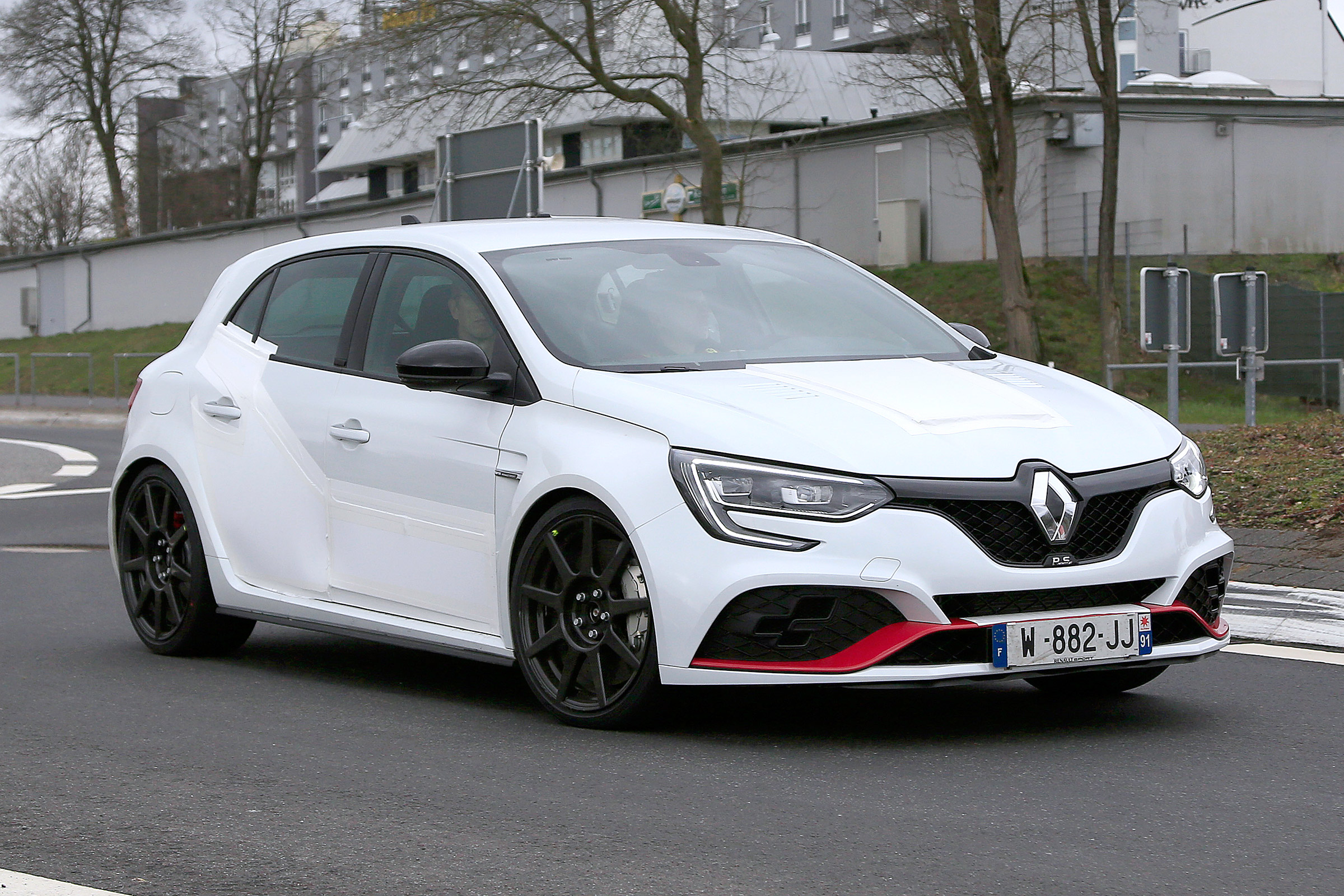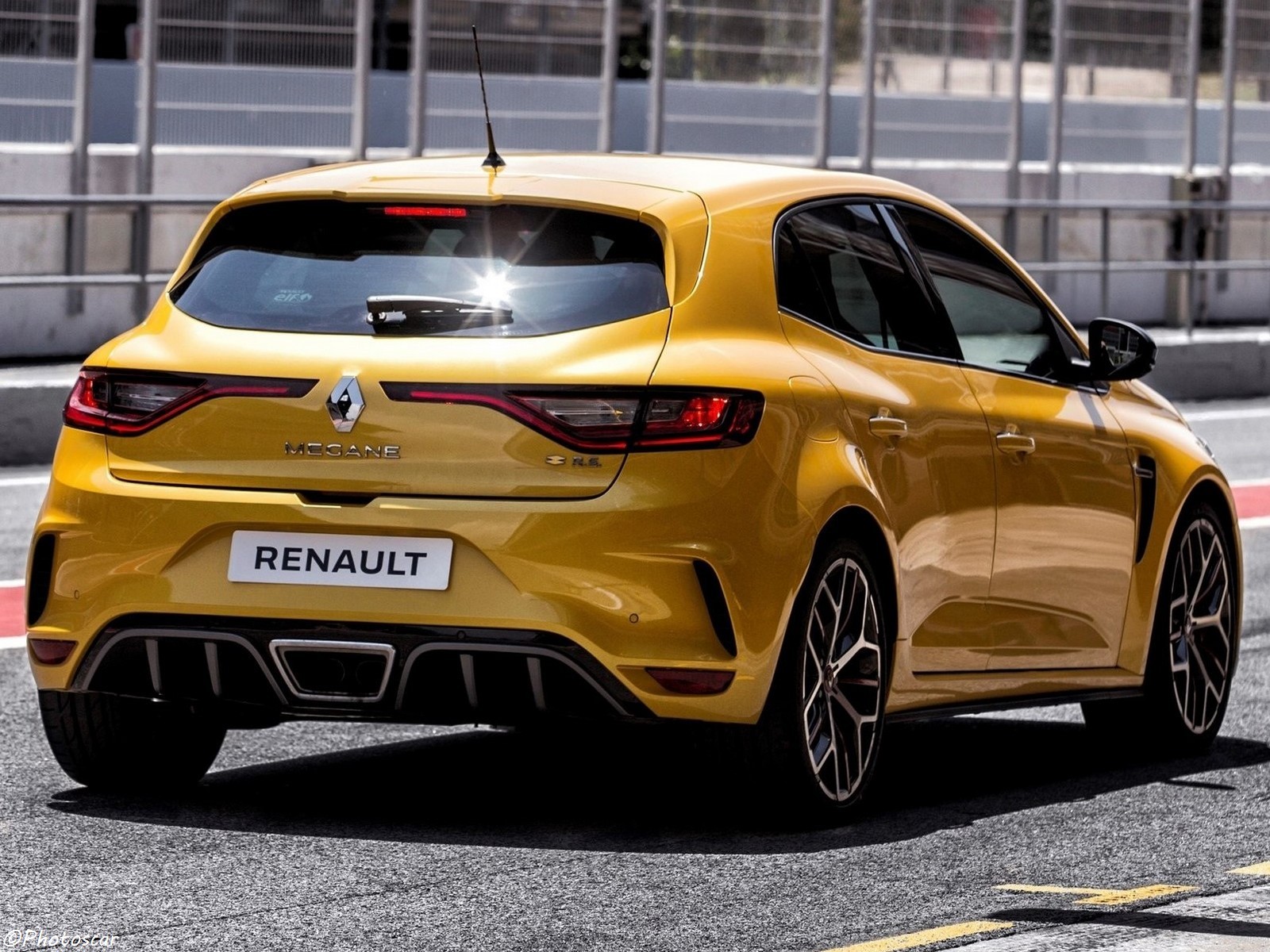

That in turn can lead to some pretty scrappy and untidy corner exits for those who aren’t careful with the car’s thrusty feeling accelerator. The four-wheel steering system, meanwhile, is definitely ready to lead you up the garden path a little when it’s working in its more aggressive settings, giving you much more apparent lateral grip on turn in and at the apex of a corner than there is available front-drive traction thereafter. You’re too busy second-guessing it to be able to place the car intuitively on the road. But in less-than-perfect conditions, its chassis is just a bit too reactive and direct.

In any conditions, the Megane RS Trophy is a livewire and likable for it. The way that the car is configured and tuned would make a great deal more sense – and for a lot more fun on a dry track. Amid the wet and the mud and the murk, it’s very definitely an ESC-on kind of drive. On a wet road, the car swings from feeling really involving to quite suddenly become a bit wild and unruly and then swings back again as you probe away at its grip levels.

It’s always lively, but its handling is particularly sensitive to bump, camber and disruption by tractive forces. The boosty engine, firm ride, fast-paced four-wheel steering system and Torsen LSD can combine to make this car a hyperactive drive on tougher cross-country roads. On a warmer test day, the tenor of all this might have been somewhat different. We should add at this point that we tested the car in chilly, wet conditions that, it would quickly become obvious to any owner, aren’t its natural home. To drive, the Megane RS Trophy’s highly-strung character hasn’t changed, although I’m not sure that sampling it with a dual-clutch automatic gearbox improves the car overall.
#Megane rs trophy drivers#
Four-seat passenger space is decent, provided that longer-legged drivers are prepared to bear the brunt of the car’s oddly shallow front footwells. The good news? Well, Renault’s optional bucket seats are comfortable and clamp your backside right where it needs to be. You shouldn’t have to move your hands from a-quarter-to-three on the wheel to reach a shift paddle, and on a car whose super-direct rack seems purpose-built to encourage such a fixed grip on the rim, you really shouldn’t. Apologies that these are all criticisms of this car that you may have read previously, but since Renault has failed to address so many of them, they seem worth repeating.Īnd we’re not finished with them yet, because the automatic car’s ergonomic failings continue to extend to high and unintuitively placed ‘manual’ shift paddles for the six-speed gearbox, and now that it’s EDC or nothing, that seems to annoy all the more. The car’s driving position remains flawed, seating this slightly taller-than-average tester either too close to the pedals or too far from the other primary controls for optimum comfort. Nobody ever asked for a half-sized glovebox or cupholders slightly too small and shallow to actually hold a decent-sized cup, did they? Sadly, we still get ’em. They do lift the ambient perceived quality levels a little, but there are still plenty of cheaper fixings and harder, lower-grade mouldings used in obvious places, while useful storage space around the cabin remains in slightly mean supply. Renault’s material updates take a keen eye to spot, but among the most prominent are the new 9.3in touchscreen infotainment system (which has notably sharper graphics and a better laid-out home page and responds more quickly) and some more appealing heater controls. After a simplification of the range, you now have to buy a Trophy to get the firmed-up Cup suspension but if you do, you also get an active sports exhaust, 19in wheels, a Torsen slippy diff and a front brake upgrade, none of which are available on the softer-sprung RS 300. One less reason to spend big on the Trophy version, then? Well, perhaps, but there are still others. The updated hot Mégane also gets new headlight and tail-light designs, a new infotainment system and a new instrument display, but no changes have been made to its mechanicals, save for the aforementioned gearbox deletion, and for one other: both standard RS and RS Trophy models now use the higher-powered 221kW version of Renault’s 1.8-litre engine with its ball-bearing-born turbocharger.


 0 kommentar(er)
0 kommentar(er)
